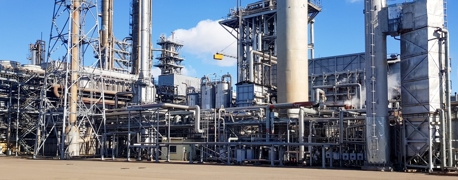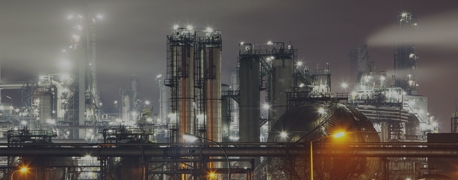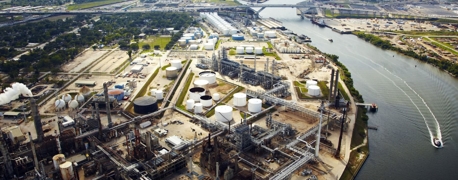Winter Weather Dangers: Why Winterizing Is Crucial for Chemical Plants

Cold weather brings many risks, from ice lurking along the roads to triggering severe power outages due to underprepared power plants. Dangers can also build more quietly and invisibly at any of the thousands of chemical plants across the United States, until in a moment the damage done by freezing temperatures creates spills, fires, or explosions. If chemical plant owners delay winterization or inadequately perform preparations for winter, then they’re putting every worker at the plant in danger when temperatures plummet. This can place the surrounding communities at risk as well.
How Cold Temperatures Impact Chemical Plants
No matter where you live in the United States, you may have noticed that winters seem to be harsher, summers longer, and storms worse. According to the EPA, studies indicate that human-induced climate change may consistently lead to more extreme weather events, including both heat waves and extreme winter storms.
In states that are accustomed to brutal winters, chemical plant facilities are built indoors, and owners and operators have more of the equipment and experience to prepare these plants for winter. Even then, however, winterization practices may not always be consistent in adequate. In southern states like Texas, the urgency for winter prep is even more severe. Chemical plants in these regions are built out of doors, with extremely hot weather conditions in mind. Now more than ever before, these states must also focus on proper winterization, and must do so quickly. Otherwise, the outcomes can be catastrophic.
When it’s freezing, air lines can be squeezed, compromising fire protection lines, storage tanks, valves, and more, constricting pipes and damaging equipment as well as the substances inside them. When temperatures drop, water and other materials at chemical plants can freeze, which means these substances will expand. This expansion can be more than pipes and equipment are able to handle, creating cracks and breaks that lead to leaks and/or instrument failure. What makes this type of damage even more pernicious is that the danger won’t always be evident right away. For instance, if frozen water cracked a valve, it may not be until the ice thaws that a leak develops, and it could stay under the radar until it grows into a massive problem. If freezing temperatures leave solid hydrates in the pipes, the resulting blockages could also lead to delayed but deadly accidents.
The Dangers of Extreme Cold for Chemical Plants Are Often Ignored Until It’s Too Late
While the Winter Outbreak of 2021 drew national attention for deadly power outages across Texas, the issue of failing to winterize industrial facilities has been a long-standing problem throughout the U.S. Below are just some of the tragic examples of how a company’s failure to winterize a chemical plant can lead to injurious and even deadly accidents. Refineries, plants, and other facilities that contain hazardous materials must be properly winterized to avoid catastrophic injuries and losses of life.
Bethlehem Steel Corporation Gas Condensate Fire in Chesterton, Indiana (2001)
Back in 1992, a furnace that was powered by coke oven gas was disconnected at one end, but the pipe was left where it was, essentially ignored for nearly a decade. Over that time, water pooled inside, as the gas’s condensation turned into water and liquid gas condensate. Insulation was removed from this pipe, leaving it vulnerable to freezing temperatures, and the liquid inside was kept from draining because of the ice that developed within. When all the water inside the pipe froze in February of 2001, it expanded enough to crack an attached valve. This meant that when the steel mill workers went in to replace the valve, the liquid gas condensate sprayed out and ignited. The fire killed two workers and injured four more.
Even if certain equipment is not in active use, it needs to be monitored, winterized, or otherwise dealt with, else it can still cause issues in freezing temperatures.
Valero Refinery Propane Fire in Dumas, Texas (2007)
A valve leak in a refinery led to liquid propane building up around some pipes. When the air dropped to just 6° Fahrenheit, the liquid propane froze around some piping and cracked it. Once the ice melted, the leaked propane soon caught on fire, leading to severe burn injuries for three workers and leaving more than $50 million in destroyed property.
DuPont Chemical Plant Accident in LaPorte, TX (2014)
In November 2014, four workers lost their lives as a result of a toxic chemical release at a DuPont pesticide plant in LaPorte, Texas. Days before the deadly incident, water had mixed with liquid methyl mercaptan in outdoor piping. Because the pipes weren’t properly protected from the cold, low temperatures caused the mixture to form a solid hydrate, creating a blockage in the piping.
Upon discovering the blockage, a DuPont company team decided to spray hot water on the piping, aiming to melt the hydrate. At the same time, they opened valves from the affected pipe into a vent piping system to prevent problems caused by thermal expansion. Workers labored all night, pausing to take a break after they were unable to get plant operations back online after their initial attempt to clear the blockage. It was during this break that a new issue cropped up: there was too much pressure in the vent piping system.
The vent piping system at the LaPorte plant had been experiencing issues for some time. Every day, workers had to go inside the manufacturing building to drain liquid from the vent piping system. On the night of the accident, two workers went to the manufacturing building to do this, not realizing that the blockage had been cleared and that liquid methyl mercaptan was now draining from the open valves. The room was filled with toxic vapor. One of the workers called for help, and two workers responded to the distress call. All four of those workers lost their lives.
What Is Winterization?
Winterization is a term used to describe the process that a plant, refinery, or other facility undergoes to prepare for cold weather. Depending on the type of facility and the anticipated temperature drops, winterization may include a number of plans, processes, and procedures. Ideally, winter preparations should begin in the late summer or early fall, giving ample time to identify and fix any potential problems or deficiencies.
Winterizing a chemical plant may include such steps as:
- Retrofitting piping, instruments, and equipment for cold weather
- Putting up wind barriers
- Increased monitoring of critical areas
- Inspecting and upgrading equipment to better withstand cold temperatures
- Increased frequency of operator rounds during winter months
- Training workers on winterization methods and best practices
- Educating workers on how to recognize potential problems
- Drafting plans on how to address weather-related problems
- Completing a full walkthrough of the entire facility when winterization is complete
Plant operators should create winterization checklist that include every single step to prepare a facility for cold weather. A formal winterization program, in writing, can help ensure nothing is missed.
Winterization Regulations & Best Practices
According to the U.S. Chemical Safety and Hazard Investigation Board (CSB), chemical plant owners and operators should implement procedures that address low temperatures and their impact on piping, equipment, and instrumentation. These procedures should reflect a year-round focus on cold weather preparation, including winterization and returning a plant to normal operations as temperatures rise again.
Some of the methods include using insulation and/or heat tracing for equipment that is vulnerable to cold. Heat tracing is often necessary in areas like New England, where insulation alone isn’t sufficient to protect from subzero temperatures. Heat tracing involves a system of heated cables that run along pipes to provide the warmth needed to counter cold temperatures and prevent freezing. For heat tracing to be successful, a careful system design is required, as well as processes for regular inspection and maintenance to ensure the system keeps working when it’s most needed.
The American Petroleum Institute (API) recommends the following to prevent freezing and then fires in refineries:
- Making note of all equipment that could be exposed to freezing temperatures (even disconnected pipes lying around)
- Write out specific winterization plans for each piece of equipment
- Make sure specific roles are assigned to workers to carry out those plans
- Regularly assess the efficacy of the plan
- Provide winterization training to workers, especially when it comes to maintenance roles
While these are great recommendations for effective winter-proofing, they aren’t backed by any real plans for follow-up inspections from outside parties, nor are they backed by any power to enforce these measures. No matter how sensible and proven these methods of winterization are, they will likely remain as mere suggestions that companies can feel free to ignore.
A Winter Weather Wake-Up Call for Chemical Plants
In February 2022, the U.S. Government Accountability Office (GAO) issued a report detailing the risks climate change may present to regulated facilities like chemical plants. According to the report, about 31% of facilities that make, use, or store hazardous chemicals are located in areas of the United States where natural disasters like floods and severe storms are known to strike. That means more than 3,200 facilities are in the path of floods, storms, wildfires, and even a rising sea level. Many believe, GAO included, that natural disasters will only worsen in intensity and frequency along with climate change.
Despite its alarming expectations, GAO so far has only issued recommendations that lack any enforcement measures and power. In the report, even GAO admitted that the facilities it assessed don’t have enough information or direction to work with, something that it assigned the Environmental Protection Agency (EPA) to provide. The EPA was urged to start providing chemical plants with specific guidelines on how to mitigate weather risks, as well as come up with a plan to follow up with regular inspections. The EPA has also been tasked with uncovering winterization deficiencies across these facilities, setting compliance goals, and providing environmental justice data, so as to rank which facilities most urgently need to get themselves in compliance. So far, the EPA has only managed to complete that last step.
When Companies Ignore This Wake-Up Call, Workers & Communities Pay the Price
With the lack of any real government pressure, this puts the responsibility to prepare adequately for winter entirely on companies and employers. Too often, workers are the ones who pay the price when companies cut corners by delaying winterization or failing to replace aging or defective equipment, as workers are on the front lines whenever extreme weather damages chemical plants. Sometimes, like the workers at the DuPont plant in LaPorte, they even pay with their lives for company negligence. Improper winterization can also increase the risk of a spill that affects groundwater and delicate ecosystems, not to mention local communities, wildlife, crops, and cattle.
Winterization is not optional for chemical plants in areas where temperatures drop to dangerous lows. Companies owe it to their workers, the communities where their plants are located, and the environment to take the appropriate measures that prevent weather-related incidents.


